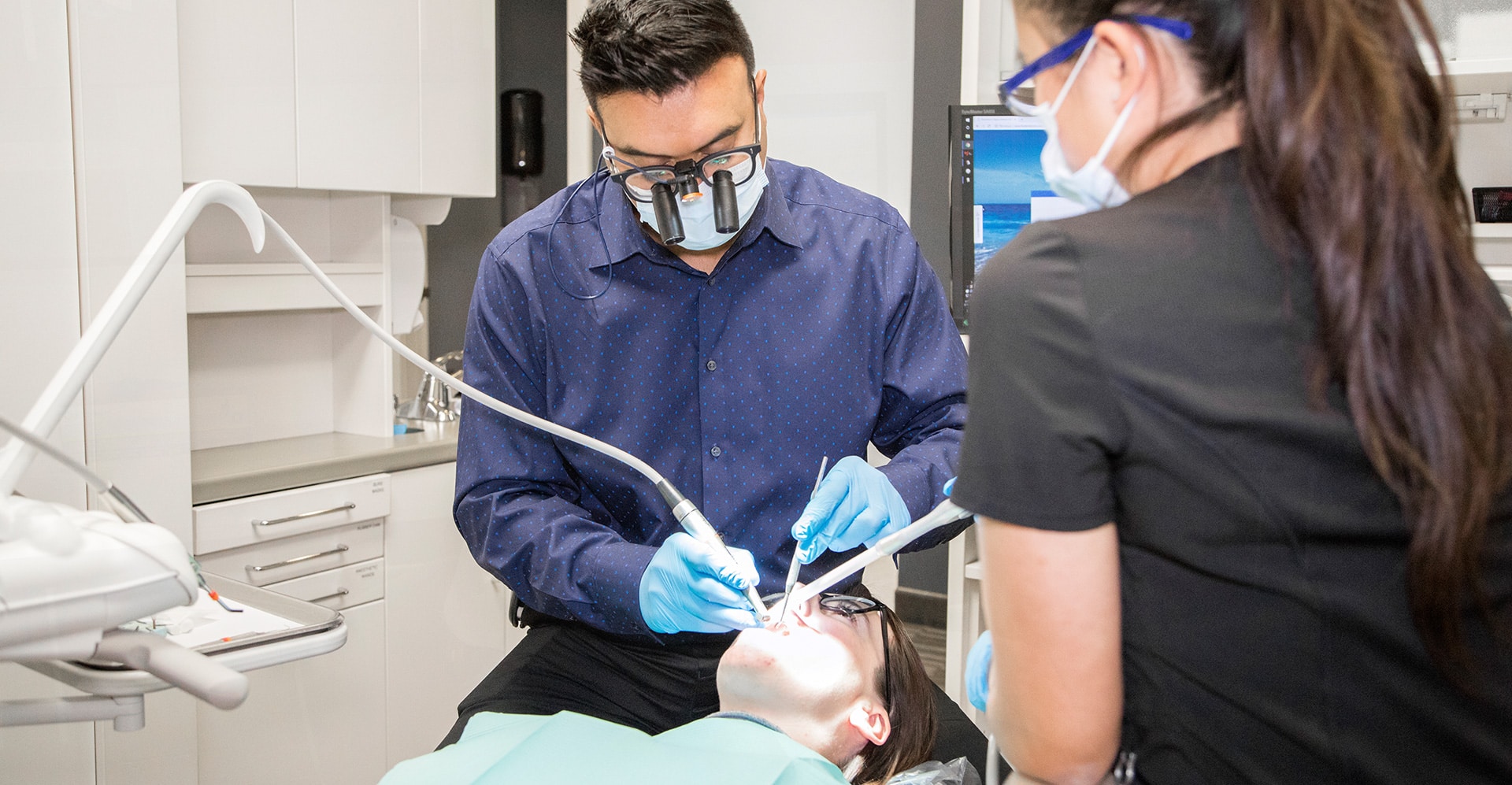Periodontists specialize in the prevention, diagnosis, and treatment of infections and diseases of the soft tissues around the teeth and the jawbone. After four years of dental school, periodontists train an additional three years and master the most advanced techniques for treating periodontal disease and placing dental implants. As well as performing a great many cosmetic procedures, periodontists are also able to enhance one’s smile to its full potential.
Plaque contains toxins that attack the soft tissues surrounding the teeth, resulting in periodontal disease. The bacterium embeds itself in the gum and breeds rapidly, causing a bacterial infection. As the infection progresses, it burrows deeper into the tissues, causing inflammation and irritation between the teeth and gums. As a result of the body’s response, the gums appear to recede as it destroys the infected tissue. There is a tendency for the pockets between the teeth to deepen over time, and if no treatment is sought, then the tissue that makes up the jawbone is reshaping, resulting in unstable teeth and tooth loss if no treatment is sought.

It is possible to seek treatment from a periodontist in a number of ways. In the course of a regular dental examination, a general dentist or hygienist may recommend a consultation with a periodontist if they observe signs of gingivitis or rapidly progressing periodontal disease. If you would like to schedule a periodontal consultation, however, you are not required to get a referral.
It is important that you schedule an appointment with a periodontist as soon as possible if you experience any of these signs and symptoms:
The periodontist must thoroughly examine the gums, jawbone, and general condition of the teeth before initiating any dental treatment. The periodontist has several surgical and nonsurgical options available when gingivitis or periodontal disease is diagnosed in order to treat the underlying infection, prevent soft tissue recession, and restructure or replace missing teeth.
Consult your periodontist if you have any questions regarding periodontal disease, periodontal treatment, or dental implants.
Our dentists pride themselves on putting your needs first and offering FREE PARKING — a rarity for downtown dentists. We care and we listen. Our dentists have years of experience and are here to serve your needs at every appointment. If you have a question about your smile or need a second opinion, we’re here to help.

The Dental Room has been serving the community for several years in Downtown Calgary. We provide our patients with high-quality, affordable, and comprehensive dental care. In our general dentistry clinic, we utilize the latest in dental technology and techniques. Our goal is to provide a healthy and beautiful smile for a lifetime.
| Monday | 10:00 a.m. – 06:00 p.m. |
| Tuesday | 09:00 a.m. – 02:00 p.m. |
| Wednesday | 09:00 a.m. – 05:00 p.m. |
| Thursday | 09:00 a.m. – 05:00 p.m. |
| Friday | CLOSED |
| Saturday | CLOSED |
Copyright © The Dental Room All Rights Reserved